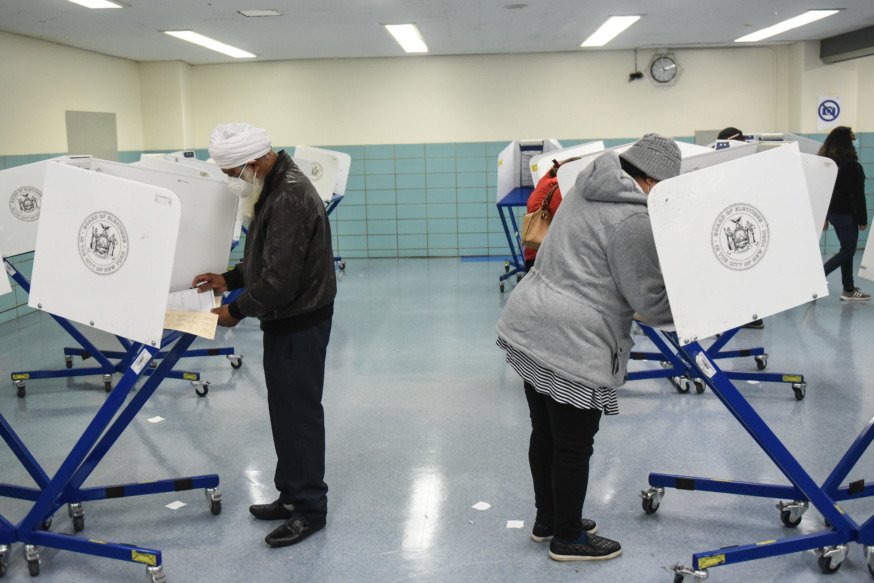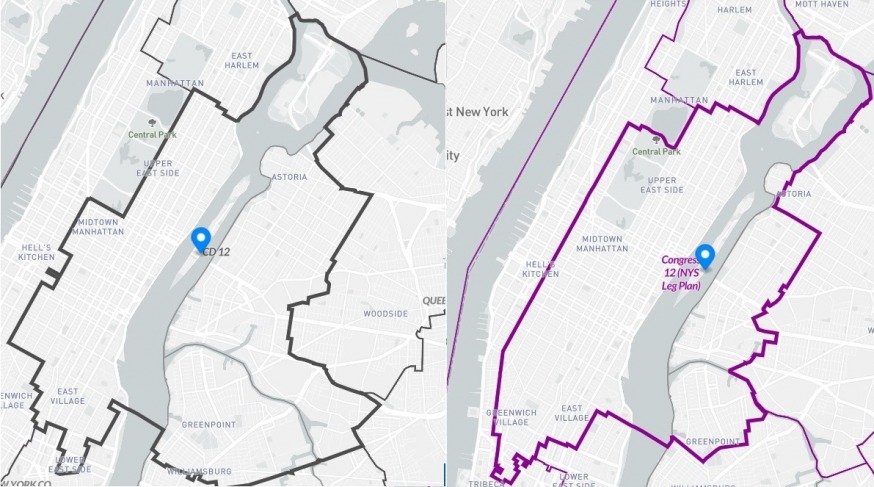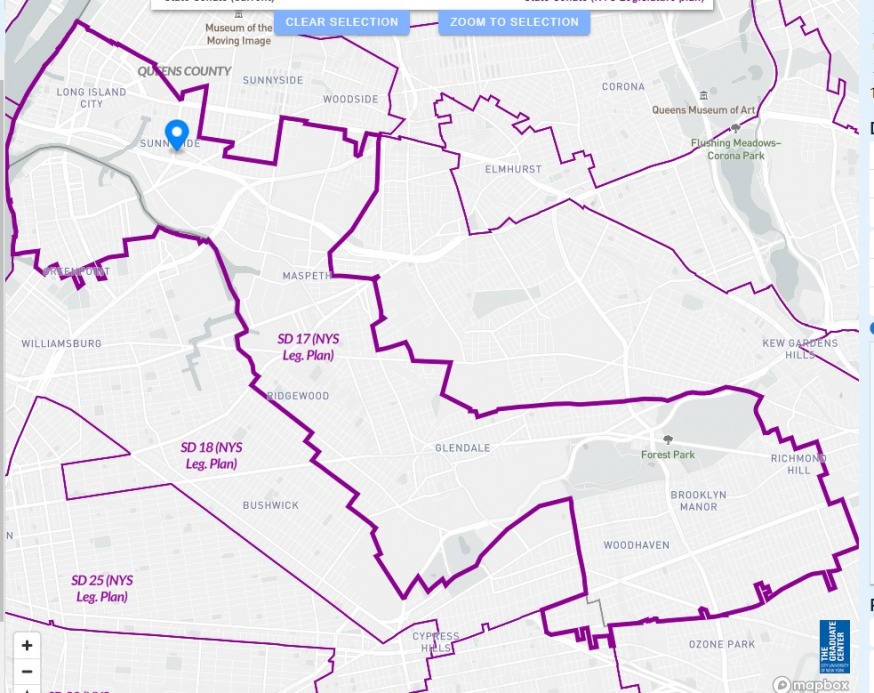
Voters cast their ballot at a polling site in Queens on Election Day Nov. 3, 2020. (Michael Appleton/ Mayoral Photography Office)
April 27, 2022 By Christian Murray
The state’s top court ruled Wednesday that Democratic leaders gerrymandered the drawing of the new Congressional and state senate lines—essentially throwing the upcoming primaries scheduled for June into disarray.
The Court of Appeals’ 32-page ruling is expected to result in the appointment of a special master who will be put in charge of drawing new congressional and state senate maps. The primaries will be pushed back from June 28 to sometime in August in order for new maps to be drafted.
The ruling, which is not subject to appeal, did not pertain to the drawing of the state assembly maps, which were not challenged. The court did not say whether the primaries for the assembly seats or governor should also be moved from June 28.
The court did note, however, that New York had held primaries at varying dates in the past.
“Although it will likely be necessary to move the congressional and senate primary elections to August, New York routinely held a bifurcated primary until recently, with some primaries occurring as late as September,” according to the court opinion.
The court, in a divided ruling, said that the Democrats were in violation of the state constitution. The judges said that Democratic leaders had undermined a series of reforms adopted in 2014 that aimed to reduce partisanship from the redistricting process through the formation of an outside commission.
The Democratic legislature, however, gained control of the map-drawing process since the independent redistricting commission—that was mandated via a voter referendum—failed to reach an agreement on the lines.
The maps were then drawn by the Democratically-controlled state senate and assembly and released in February—with Astoria’s State Sen. Michael Gianaris chairing the legislative task force that drew the new lines.
The Democrats, including Gianaris, came under criticism for gerrymandering the districts to their benefit at the time. The Democrats have supermajorities in both the assembly and senate and were able to draw them without requiring the support of state Republicans.
Gianaris maintained that the maps were an accurate reflection of the state—and that they complied with strict legal requirements.
“These are districts that are drawn fairly,” Gianaris told Brian Lehrer of WNYC in February, saying that any oddly configured districts were merely correcting Republican gerrymandering in the past.
The ruling Wednesday is a result of state Republicans taking the maps to court arguing that Democrats violated the 2014 amendment barring partisan gerrymandering.
This issue focused heavily on the change to the Congressional districts, where Democrats currently hold 19 of New York’s 27 seats in the U.S. House of Representatives. The eight seats currently held by Republicans, analysts say, would have likely to have become four as a result of the redistricting—and the state losing a seat stemming from the 2020 census.
The ruling is likely to have an impact on some races in western Queens—although they won’t affect the balance of power in either Washington or Albany.
However, they will have an impact on some of the Democratic primaries, where moderate Democrats face stiff competition from progressives.

The current Congressional District 12 map (left) vs. the invalidated map created via the redistricting. Significant portions of Astoria and Williamsburg had been cut out of the map. (Source: RedistrictingandYou.org)
The primary, for instance, for the 12th Congressional District that is currently represented by Carolyn Maloney is likely to be affected.
The redistricting would have resulted in the loss of significant portions of Astoria and Williamsburg from the 12th District where many young progressives live. Those areas were to become part of the 14th District currently represented by Congresswoman Alexandria Ocasio-Cortez.
The New York Times reported in September—without naming sources—that Maloney was pushing Democrats in the state legislature to cut out the progressive parts of her district.
Maloney narrowly beat progressive candidate Suraj Patel in a contested primary in 2020. She garnered 42 percent of the vote to Patel’s 40 percent.
Patel is running again this year, as well as Rana Abdelhamid, a progressive from Astoria, and Maud Maron, a moderate.
Abdelhamid had challenged Patel’s signatures to get on the ballot. The Board of Election’s struck her challenge down.

The current Senate District 12 map (left) vs. the invalidated map created via redistricting. Significant portions of Long Island City were cut out of the current district. (Source: RedistrictingandYou.org)
The state senate districts in western Queens are also likely to undergo change once again.
For instance, Gianaris, who currently represents all of Long Island City and other western Queens neighborhoods, would have lost Court Square and Hunters Point under the revised maps—and would have picked up parts of Manhattan for the first time.
A new senate district in western Queens that was created out of the redistricting– which was to cover portions of Long Island City, Sunnyside, Maspeth, Glendale, Woodhaven and northern Brooklyn—is now in flux.
Former Council Member Elizabeth Crowley announced that she is running for the seat in a field that includes Kristen Gonzalez, a first-time political candidate and member of the Democratic Socialists of America, former council candidate Japneet Singh of southeast Queens, and Greenpoint resident Francoise Olivas.
It is unclear what will now become of the district.

The new senate district– District 17– that was created by redistricting. The map has been ruled invalid (Source: RedistrictingandYou.org)
